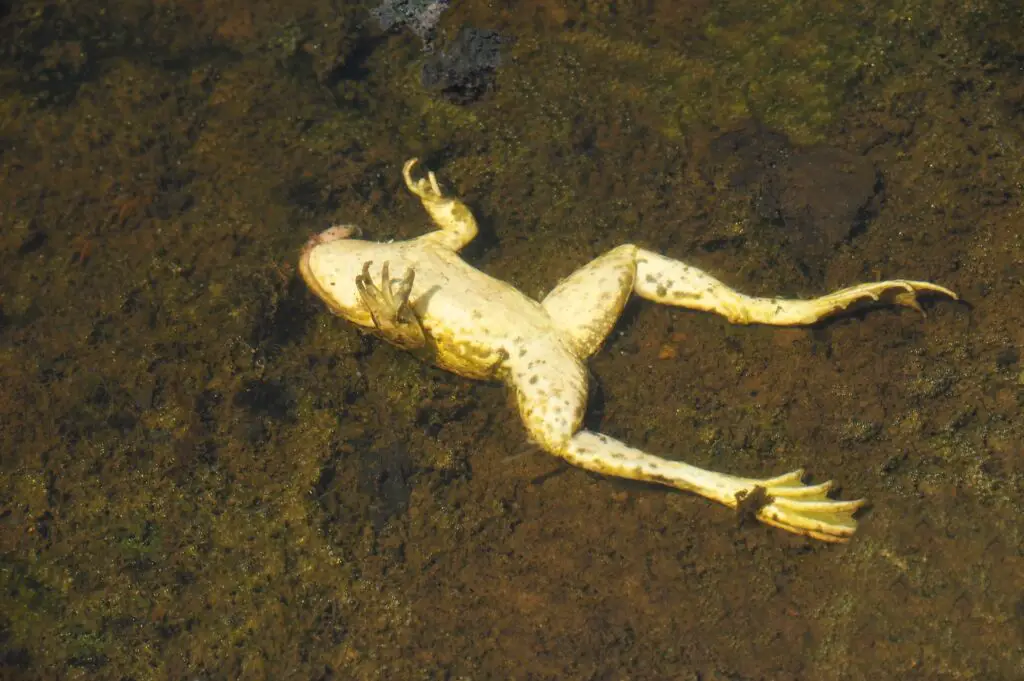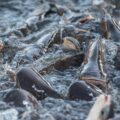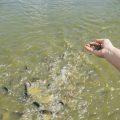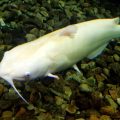In a lake, catfish can easily finish a dead animal, but that process takes days. There is a relationship between the size of the dead animal, the size and weight of the catfish, and the time required for digestion by the catfish when it is eating a dead animal. Catfish can also eat small dead animals in just a few minutes. It could take up to 2-3 days for a dead animal in a lake to be eaten, depending on its size and condition. For example, during the peak feeding season, a blue catfish will eat anywhere from 2% to 5% of its body weight daily. Largemouth bass and channel catfish have similar eating patterns.
Why Catfish Eat Dead Animals
Dead animals can be a great food source for catfish. The fish can digest the animal quickly and consume all the nutrients it contains. Some catfish species will even scavenge dead animals from lakes or riverbeds. Dead animals that have sunk to the bottom of a body of water are especially beneficial to catfish because they provide a steady food supply.
How Catfish Eats
Catfish have a distinct eating style that distinguishes them from other fish. They have a pharynx in their mouth, which allows them to consume foods that other fish cannot. This system, which is behind their teeth, will let them eat plants and small animals. Finding food is the first step in the catfish eating system. Catfish sense movement or vibrations in the water using their whiskers. They then open their jaws wide and capture the food with their elongated jaws. After catching the food, they tear it apart with their teeth. Catfish can digest plant material and animal flesh very well, so they frequently eat algae and carrion.

Why Do They Feed on Carrion?
Carrion is a nutritious resource for some vertebrates, including catfish. A carrion is a dead animal with decaying flesh. Carrion is composed mostly of muscle, blood, and other body tissue. It is high in energy content and can be an essential part of the diet of catfish. Catfish use carrion as part of their feeding behavior. For example, channel catfish feed on carrion in lakes and rivers. A group of channel catfish can consume large amounts of carrion quickly.
What Are Some Effects of a Catfish Eating Carrions
Carrion is a decomposing animal that includes dead animals such as fish, birds, and mammals. Carrion can contain harmful bacteria and viruses, which can be deadly to foe ecosystem. Dead animals in rivers. Lakes, and canals, can contaminate the water. Catfish can consume some animals, but the remainder will decay and contaminate the water ecosystem.
A catfish group would have to eat the entire carcass to get its nutrients. It would take about two days for a catfish group to consume the entire carcass. This is because a catfish eats small prey that it can quickly digest. This is a way catfish are part of an ecosystem.
How Does a Catfish Digest Carrions
Carrion is an animal that has died and is beginning to decompose. Lichens, algae, and other microbes start to break down the flesh and skin. These decomposers release lactic acid, which attracts insects.
Catfish can feed on carrion, the decaying flesh of animals. Carrion is a source of food that is high in calories and nutrients but has little or no oxygen. Catfish use their strong swimming muscles to break down the carrion into small pieces. Then, they use their sharp teeth to devour the food.
How Long Would It Take for a Catfish to Eat a Dead Animal in a Lake?- Facts
Let’s look into some facts that will have an impact on catfish carcass eating time.
Prey of a Catfish
When it comes to food, catfish are opportunistic eaters, meaning they will eat anything that is there. Catfish feed on many prey items, including other fish, mollusks, insects, crayfish, snails, clams, birds, and frogs. They’ll also devour floating algae and decomposing animal and plant matter. Seagrass, sea cucumbers, shrimp, and blue crabs are some of the foods that saltwater catfish like to eat.
Size vs. weight of catfish
It can take a catfish anywhere from a few minutes to a couple of hours to consume a small dead bird. Factors that influence how long it takes the fish to finish the meal include its size, the prey’s size, surrounding water temperature, and currents. In general, smaller catfish take less time to eat than larger ones, and fast-flowing waters speed up the process. Blue catfish typically ingest 2%–5% of their body weight daily during peak feeding season. Both channel catfish and largemouth bass have similar feeding habits.
Digestive System
A catfish’s digestive system is made to break down food that floats in the water. While it’s possible for a catfish to consume a decaying animal, it would likely take quite some time for the fish to complete its digestion.
Catfish: When Do They Eat?
Many species of catfish are nocturnal, although others are active throughout the day. Some animals are strictly nocturnal, only foraging for food in the dark. The African catfish is a typical night-feeding animal. Some species are active during the day and others at night. These facts impact how long a catfish eats a dead animal.
Catfish: How Often Do They Eat?
Most farm-raised catfish growers feed once a day, seven days a week, during the warmer months. Feeding fingerlings twice a day has been found to speed up their development, but it does not affect the size of grown fish. Wild catfish eat at varying rates, with age playing a major role. Catfish of a younger age require a higher food intake than adults. As a result, they will need to eat as regularly, if not more, than full-grown catfish. Therefore, how long a catfish can take to eat a dead animal also depends on its food intake.
How Do Catfish Hunt?
Some catfish species use the “pack-hunting” method, in which several catfish work together to catch prey. Most of the time, they use herding to trap and then ambush their favorite prey. Catfish can also hunt by aiming at their prey and catching it.
Catfish typically consume either alive or dead food items. Because they do not fight back, dead animals are easier for fish to capture and destroy. There is no scientific evidence to suggest how long it would take a catfish in a lake to consume a dead animal, but studies have shown that it could take as little as 10 minutes or as long as several hours.
Conclusion
The nutritional needs and feeding habits of channel catfish have been extensively studied. As a result, it explains why a group of catfish can finish a dead animal in a matter of hours or days.
However, there is yet to be a definitive answer on how long it would take for a catfish to eat a dead animal in a lake because it depends on the catfish’s size and the nature of its feeding habits. Generally, it would take a large animal (such as a largemouth bass) 2-3 days to consume an entire dead animal in a lake.












Pingback: Do Catfish Eat Bass? | Reel Fishing Guru